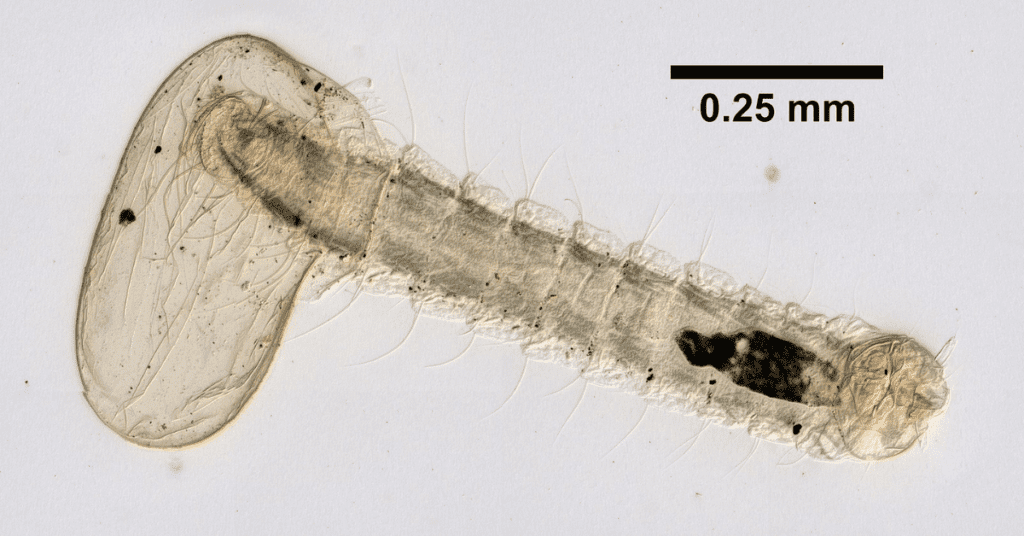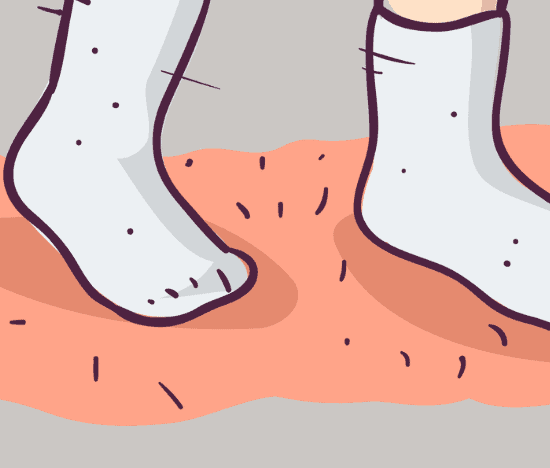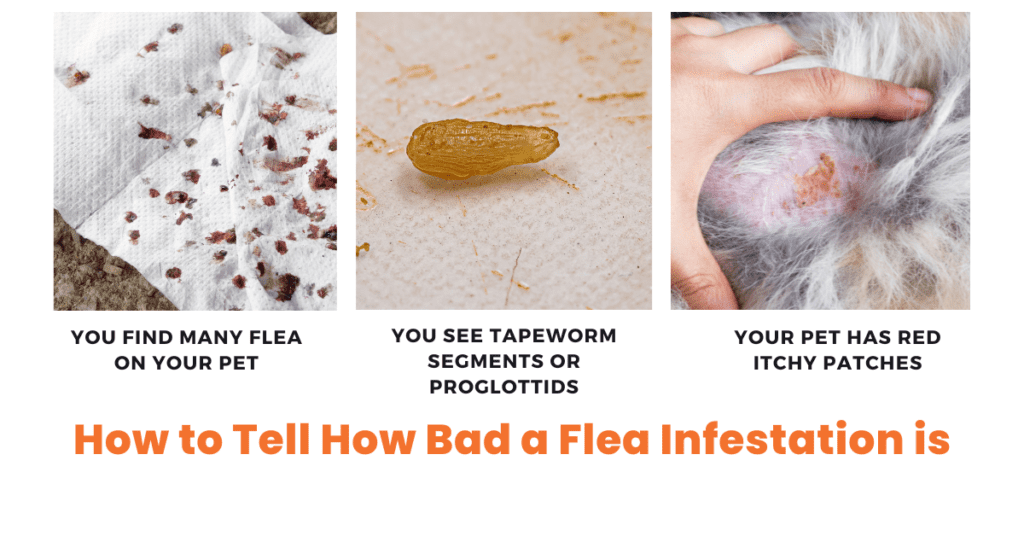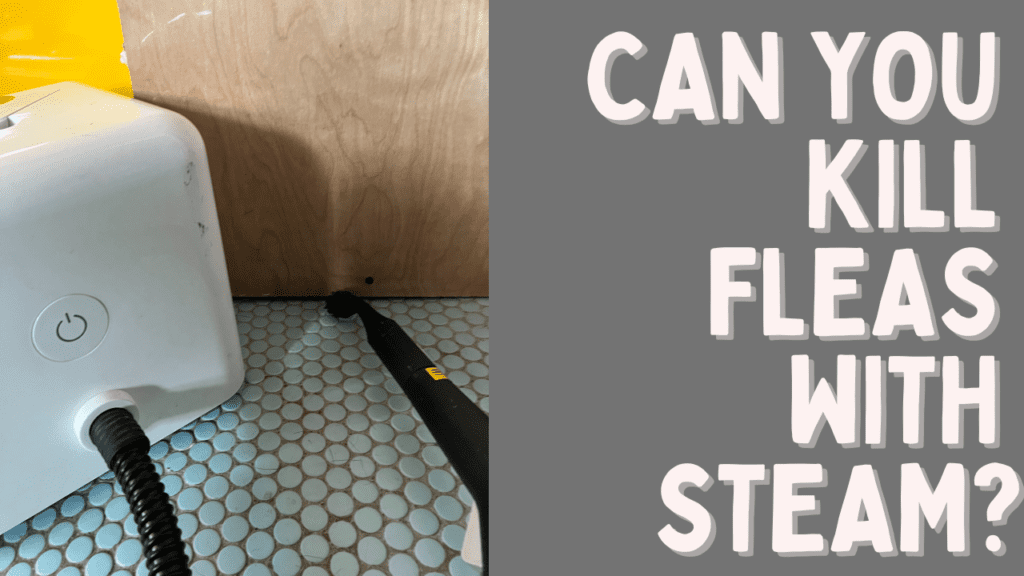Dealing with a flea infestation can be a nightmare for any pet owner, but understanding the severity of the problem is crucial to finding the right solution. In this article, you’ll learn how to tell how bad a flea infestation is and what steps to take to address the issue accordingly.
Fleas come in different shapes and sizes, depending on the life stage. Furthermore, it’s essential to gauge the severity of the infestation to determine the appropriate course of action.
Following this article’s advice, you can identify the signs of a flea infestation. We’ll help you assess the degree of the problem and start taking the necessary steps to reclaim your home and protect your furry friend.
Lastly, by the end of this article, you’ll have the tools and knowledge necessary to tackle a flea infestation head-on. No more itching, scratching, or worrying – you’re about to take control of the situation and make your home a flea-free sanctuary once again!
Recognizing the Signs of Flea Infestation (How to Tell How Bad a Flea Infestation Is)
It’s crucial to identify a flea infestation early to take prompt action. Here are some key indicators to help you recognize the signs of flea infestation in your home and on your pets. Let’s dive into them and learn more.
Adult Fleas

One of the most obvious signs of a flea infestation is the presence of adult fleas. More importantly, watch for small, reddish-brown insects scurrying through your pet’s fur, furniture, and carpets.
Be aware that fleas can survive in a home without pets. In addition, our in-depth article: “how long do fleas live?” will help answer more of your questions on this topic.
They are usually around 1/8-inch long and are visible to the naked eye. You can also use a flea comb to gently brush through your pet’s fur to check for fleas.
If you spot numerous adult fleas, it’s essential to act quickly. Furthermore, you know you have a terrible infestation if you see fleas in bed.
Flea Eggs and Larvae

Seeing flea eggs and larvae in your home is another sign that you’re dealing with a flea infestation. In addition, flea eggs are tiny, white, oval-shaped particles often found in pet bedding, carpets, and furniture.
Flea larvae are worm-like with a semi-transparent white body, feeding on organic debris and flea dirt (more on this later). The thing is the larvae and pupae can overwinter, these help fleas survive the winter.
Regularly inspecting your pets and their surroundings can help spot these early infestation signs. Lastly, if you find any, it’s time to start treating your home and pets to eliminate the pests.
Scratching and Biting Behavior
Unusually excessive scratching and biting behavior in your pets is another indicator of flea infestation. Fleas usually bite pets around the neck, tail, and belly area.
If your pets are constantly scratching, licking, or biting themselves, check for fleas, as it might be the reason behind their discomfort. Furthermore, you can usually tell how bad a flea infestation is by watching your animals closely.
Flea Dirt
Flea dirt, or flea excrement, is a mixture of feces and dried blood, serving as a food source for flea larvae. It appears as tiny black or brown specks in your pet’s fur or on surfaces your pets frequent, such as bedding or carpets.
Perform a simple test to confirm whether the specks are flea dirt. Gently wet a white paper towel and place the dots on it. If they dissolve and leave reddish-brown stains, it is probably flea dirt, indicating a possible flea infestation.
Now that you’re familiar with these signs, you’ll be better equipped to identify and tackle flea infestations early on. Plus, learning to tell how bad a flea infestation is, ensures you can work on elimination.
Some links on this page are Amazon affiliate links. We earn a small commission if you finalize a purchase.
Assessing the Severity of a Flea Infestation
Understanding the severity of a flea infestation is crucial to combat it successfully. This section will discuss various methods to assess the infestation level, including visual inspection, trapping and monitoring, and assessing your pet’s condition.
Visual Inspection

Examining your surroundings is the first step to gauging the infestation level. Look for small, dark spots on your floors, carpets, and furniture. In fact, these might be flea droppings.
The more you find, the more severe the infestation. What’s more, if you see a lot of flea dirt, you’ll probably also see jumping fleas.
- Check corners, crevices, and baseboards where fleas might hide.
- Inspect your pet’s bedding, as well as your own, for evidence of flea activity.
- Wear white socks while walking around the house; You can spot fleas against a light-colored background.

Trap and Monitor
Setting up traps helps you monitor the infestation progress while providing some control. The most common method is a light-based trap or a sticky trap.
| Trap Type | Description | Usage |
|---|---|---|
| Light Based Trap | Attracts Fleas With Warmth and Light | Place Near Suspected Infestation Areas |
| Sticky Trap | Catches Fleas on a Sticky Surface | Place Along Baseboards and Behind Furniture (Where Pets Don’t Go – Because they Can Get Stuck) |
Pet Assessment
Your pet’s behavior and health can offer valuable clues about the infestation’s severity. More importantly when trying to figure out how bad a flea infestation is, pay close attention to the following:

- Excessive scratching, biting, or licking
- Red, irritated skin or hair loss
- Visible fleas or droppings in your pet’s fur
If your pet is showing signs of distress, the infestation may be severe and, in turn, require professional help.
Impacts of a Severe Flea Infestation
If you’re dealing with a flea infestation, it’s essential to understand the potential consequences for both your family and your home. In this section, we’ll cover the health risks for pets and humans and the damage that fleas can cause to your home and belongings.
Health Risks for Pets
Unfortunately, when fleas infest your furry friends, their health can deteriorate rapidly. With this knowledge, it’s essential to gauge how bad a flea infestation is.
Some common issues your pet might experience include the following:
- Anemia due to significant blood loss from flea bites
- Allergic reactions or skin irritation caused by flea saliva
- Tapeworms, which can result from swallowing fleas while grooming
Lastly, you must monitor your pet’s health closely and consult a veterinarian if you notice any symptoms or behavioral changes.
Health Risks for Humans
Fleas aren’t just a nuisance for your pets – they can also cause health issues for you and your family. This is why gauging how bad a flea infestation it is essential.
In addition, some potential risks include the following:
- Itchy, red bite marks on the skin
- Allergic reactions to flea bites, such as rashes or hives
- Infections from scratching flea bites
Look for these signs and seek medical attention if you’re experiencing any unusual symptoms or discomfort. If you say to yourself, “Help, I see no signs of bed bugs, but I have bites,” you may have a flea infestation.
Damage to Home and Belongings
A severe flea infestation can wreak havoc on your home and belongings. Unfortunately, carpets, furniture, and bedding can all become infested with flea larvae and eggs.
A flea infestation can lead to the following:
- Staining and unpleasant odors from flea feces and dead fleas
- Damage to fabrics and furniture from scratching or chewing by infested pets
- High costs for professional cleaning or replacement of infested items
As soon as possible, address the infestation and minimize its impact on your home and belongings.
Professional Help vs. DIY Treatments – How to Tell How Bad a Flea Infestation is
Dealing with a flea infestation can be overwhelming. Keep in mind that knowing when to call a professional and when to try home remedies for fleas is essential.
In this section, we’ll explore both options to help you make the best choice for your situation.
When to Call a Professional (How to Tell How Bad a Flea Infestation Is)
If you need more certainty about the severity of your flea infestation or have tried DIY treatments without success, it’s worth considering professional help. Here are a few signs that it’s high time to call an exterminator:
- Your infestation appears to be spreading, despite your efforts.
- You’re dealing with fleas on multiple pets or a severe infestation on a single pet.
- Fleas have infested your home—jumping onto your furniture, carpets, or even your bed.
- You have already tried various home remedies and store-bought products without satisfactory results.
Professionals can access more potent treatments and expertise to eliminate a persistent infestation. In brief, feel free to seek their help when needed.
Effective Home Remedies
Fortunately, you can try several home remedies before turning to professional services. Unquestionably these may help you regain control over a mild to moderate infestation:
- Flea comb: Regularly combing your pet with a flea comb can help remove adult fleas and prevent them from laying more eggs.
- Dish soap trap: Fill a shallow dish with warm water and a few drops of oil and dish soap. Place it near a light source at night. Fleas will jump toward the light and become trapped in soapy water, which helps reduce their population.
- Regular vacuuming: Fleas lay eggs in carpet fibers and crevices. Vacuuming for fleas daily can remove them before they hatch and become adults.
- Natural repellents: Using natural repellents, like the Wondercide products, around your home can deter fleas from residence.
- Washing bedding and toys: Wash and dry your pet’s bedding and toys in hot water and a high-heat dryer once a week to eliminate any flea eggs that may be hiding there.
- Using a steamer: Using a steam cleaner for fleas will help reduce the populations and kill off the pupae, larvae, and eggs that may have dropped into cracks and crevices.
You’ve got this! Keep in mind these remedies will not be adequate for severe infestations. However, they can help maintain a flea-free home after professional treatment or prevent future infestations.
Prevention and Ongoing Maintenance
Controlling flea infestations requires consistent effort and good habits. Unquestionably here’s how you can prevent and manage these blood-sucking parasites in various aspects of your life:
Pet Care Tips
Your pets are the main target of fleas, so keeping them clean and protected is essential. Follow these guidelines for effective pet care:
- Brush your pets frequently with a flea comb to catch and remove fleas or flea dirt.
- Keep your pets’ bedding and sleeping areas clean, washed, and vacuumed.
- Speak to your veterinarian about using a monthly flea prevention product, such as a topical treatment, collars, or oral medication.
Keeping the Home Flea-Free
Maintaining a clean and clutter-free living space can make it harder for fleas to thrive. Implement these measures for a flea-free home:
- Vacuum frequently, particularly in pet resting areas, carpeted floors, and upholstered furniture.
- Wash your pet’s bedding, blankets, and plush toys regularly in hot water and a dryer.
- Keep your home well-ventilated and maintain low humidity levels.
- Dispose of bags or empty vacuum canisters after each use to prevent trapped fleas from escaping.
Environmental Control
Lastly, maintain your outdoor spaces, as fleas can thrive in your yard. Here are some steps you can take:
- Keep your lawn mowed and your garden free of debris, as this will reduce flea breeding grounds.
- Limit areas of overgrown vegetation where fleas can hide or where wild animals carrying fleas may spend time.
- Consider a natural, pet-safe, outdoor flea control product, like Wondercide, to eliminate fleas in the environment.
- Regularly check and clean pet outdoor accessories, like dog houses, food bowls, and toys.
Following these pet care, home maintenance, and environmental control guidelines can significantly reduce the chances of facing a severe flea infestation.
Final Thoughts for “How to Tell How Bad a Flea Infestation Is”
Figuring out How to Tell How Bad a Flea Infestation is, is vital to eliminate them. Taking on flea infestations requires a systematic approach, and the more informed you are, the better prepared you’ll be to tackle the situation.
If your home is already suffering from an onslaught of these parasites, identify the severity of the problem as soon as possible. Once you get your bearings on how bad it is, take action immediately with insecticides and other strategies that target both adult and immature stages of flea development to eliminate them from your home effectively.
Please don’t wait for the problem to get out of hand; use this guide to help determine when and where to bring in professional help. Finally, remember that prevention is always crucial. If your pet roams outside, check them regularly for fleas to reduce their risk of an infestation. Good luck!
More Articles On Fleas



